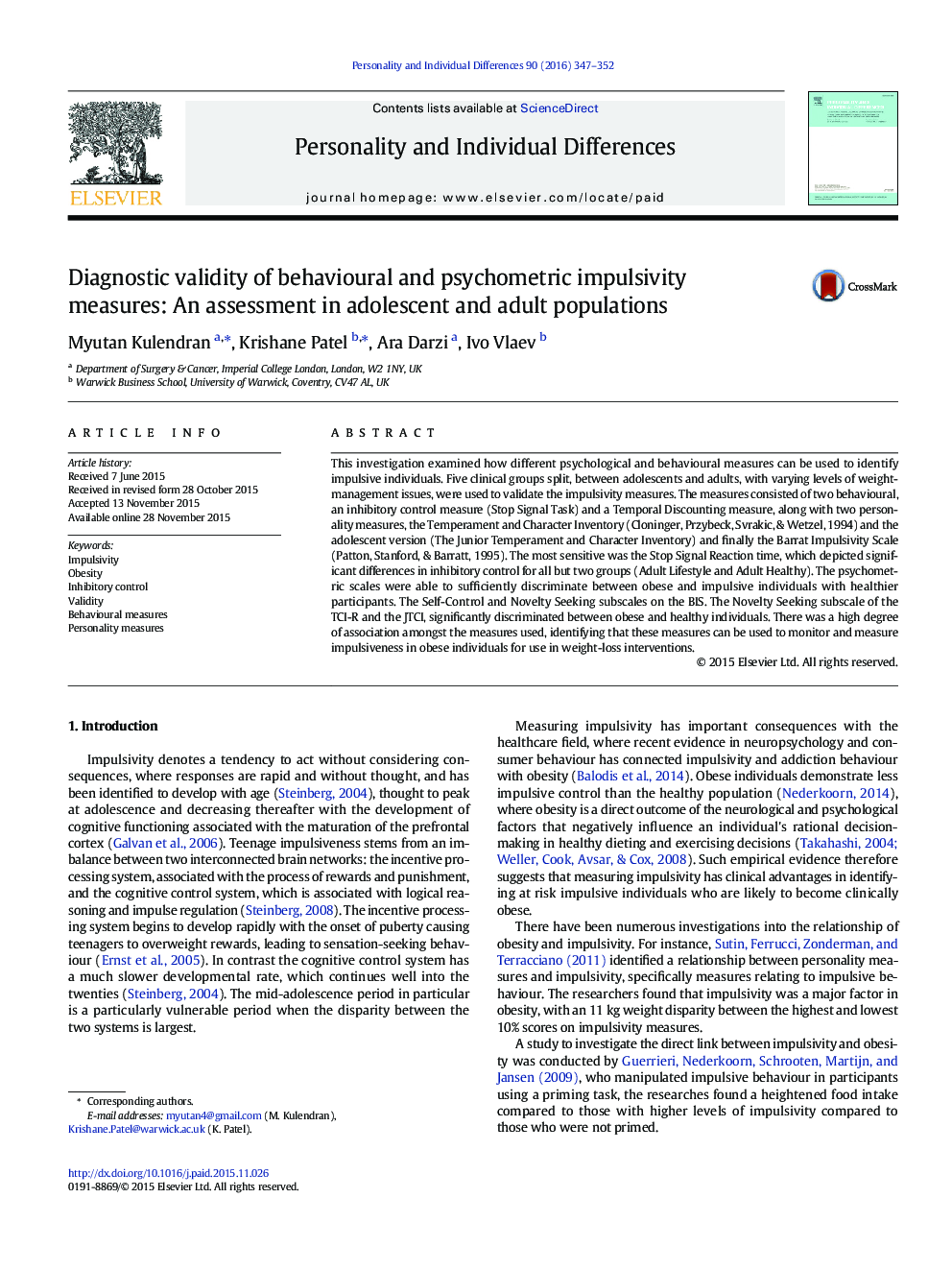| Article ID | Journal | Published Year | Pages | File Type |
|---|---|---|---|---|
| 889870 | Personality and Individual Differences | 2016 | 6 Pages |
•We examined impulsivity across five groups of clinical populations.•We used two behavioural and two personality measures.•Behavioural and personality measures discriminated obese and healthy individuals.•Behavioural measures were associated with personality measures.
This investigation examined how different psychological and behavioural measures can be used to identify impulsive individuals. Five clinical groups split, between adolescents and adults, with varying levels of weight-management issues, were used to validate the impulsivity measures. The measures consisted of two behavioural, an inhibitory control measure (Stop Signal Task) and a Temporal Discounting measure, along with two personality measures, the Temperament and Character Inventory (Cloninger, Przybeck, Svrakic, & Wetzel, 1994) and the adolescent version (The Junior Temperament and Character Inventory) and finally the Barrat Impulsivity Scale (Patton, Stanford, & Barratt, 1995). The most sensitive was the Stop Signal Reaction time, which depicted significant differences in inhibitory control for all but two groups (Adult Lifestyle and Adult Healthy). The psychometric scales were able to sufficiently discriminate between obese and impulsive individuals with healthier participants. The Self-Control and Novelty Seeking subscales on the BIS. The Novelty Seeking subscale of the TCI-R and the JTCI, significantly discriminated between obese and healthy individuals. There was a high degree of association amongst the measures used, identifying that these measures can be used to monitor and measure impulsiveness in obese individuals for use in weight-loss interventions.
